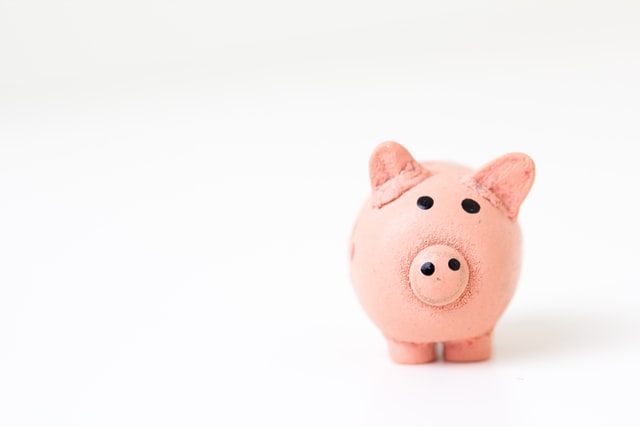Cash on hand is key to your business’ survival in times of crisis. In this post you will learn how to work out how much cash you’ll really need.
Cash is the lifeblood for any business. Without it you don’t have a business.
So when your income hits a dry patch or your sales unexpectedly take a nose dive, having cash on hand could make the difference between your business’ survival and it’s failure.
Cash on hand is another name for a cash reserve. Having a cash reserve will help you to keep paying those bills, including paying your suppliers and your emoloyees.
- According to one study, 30% of businesses fail because they run out of money.
- According to one JPMorgan Chase study, the average small business has cash on hand to keep running for 27 days.
What is cash on hand?
Cash on hand is the money a business has in cash or assets that can easily be converted to cash. Cash on hand might include money held in:
- Cash registers or safes
- Business bank accounts
- Government bonds (or Treasury Bills)
- Money market funds
Bank overdrafts, revolving credit lines or bank stand by facilities are not technically cash in hand. This is because they are essentially debts. Debts that are repayable on demand (eg. at the banks request). However, having them in place could help you manage your short term cash flow. Overdrats can be expensive and you may have to provide a personal guarantee to the bank.
Why it is essential to have adequate cash on hand
If a business can’t pay it’s bills, then it is insolvent. If there aren’t enough assets (things that can be sold) to cover your bills, then you could be trading illegally and you could become personally liable for your business’ debts.
So keeping cash on hand or holding a cash reserve is useful in a number of ways:
- It allows you to keep paying your bills, for example rent, suppliers and your employees.
- If you’re thinking of selling your business or applying for loan, then it adds to the value of your business.
- If your business has seasonable demand, then it allows you to smooth out the good and bad business cycles.
- If there is a long lead time between order and delivery it allows you to keep going until you get paid.
- If you’re a start up, then it covers your costs until you start making money.
How to figure out how much cash to have on hand
But how much cash should your business have on hand? The short answer is that the amount you should have on hand depends on your financial situation.
The big credit rating agencies would say that you should have at least 1 year’s of cash expenses on hand. This is to allow you to continue trading in the event that your funding or your income dries up or you clients delay paying you.
The problem is though, that the more cash you have on hand, the less money is available for growing your business. Consequently many business advisers and accountants go down the middle and say between 3-6 months of cash expenses. Although there’s no right or wrong answer here, 3-6 months is a too simplistic.
What is true though, the more cash you have on hand, the less susceptible your business is to any “shocks”.
So at the end of the day, it’s all a balance between being able to fund your business growth and survive any shocks.
So to help you decide, the starting point is that you need to do a simple financial stocktake of your business.
The first step of your financial stocktake is to work out:

How much cash has you business been using?
To do this you will need to understand your cash expenses (money going out of your business) each month. This cash analysis needs to be separated out into two categories.
In the first category, look at the expenses on your business’ income statement for the last 12 months. (Or profit and loss account) – Then identify all those costs that are the same or similar each month (usually called fixed costs). For example, rent, business rates or property taxes, insurances, interest expenses, vehicle lease payments and utility payments (eg. electricity, gas, water). Then add them all up.
Then in the second category, look at all those expenses which change each month depending on usage. (These are are called variable costs); for example Facebook advertising, materials costs, overtime hours, shipping and storage costs.
Whilst technically, you don’t need to have cash on hand to cover them, you may choose to include them in your cash on hand amount. For example, Facebook advertising. If you have a drop in orders or business, you may want to have money available to continue with advertising to attract new business.
Once you’ve decided which of the variable costs you would want to keep paying if you income reduced, then you should add those costs to the first category.
Businesses with consistent monthly expenses
If you run a business which has consistent monthly expenses, then take the costs from your updated first category and divide that by 12 to get the average monthy expense. Then simply multiply that number by 3 – 6 to get the number of months.
Businesses with inconsistent or sesasonal monthly expenses
If your business is seasonal or has inconsistent monthly expenses with all expenses incurred in a few months, then you should aim to cover 3 months of your highest (first category) expense months.
If you don’t have any cash reserves on hand, first aim for 1 month’s cash on hand, then set your target based on below.
Building in a contingency
How your cash reserve is managed, will determine whether your business remains open. Whilst your average expenses will be a good starting point for calculating how much cash you need to have on hand,
How many months of cash should I have on hand?
Whether you decide to have 3, 6 or 12 months or a different number of months cash expenses on hand will depend on a number of things.
- Whether your business is seasonal or not. If it’s seasonal, then the cash you have on hand on average, will need to be higher. This potentially allows you to operate for longer than your 3 months of cash.
- Your business’ growth projections. If you’re in a period of high growth, then you need more cash to meet your increased expenses.
- Planned expenditure. If you have committed expenditure comming up in the next 12-24 months, which would see in an incresae in your monthly expenses, then you should factor that into your category 1 (fixed expenses) expenditure.
- Your Business stage. If your business is in early stages then you’ll need much more than if your business is in decline.
What stage is your business in?
For many companies, though, there will be some sort of resemblance to the stages defined above. Awareness of which stage you are in may help you anticipate what is coming next and how you can best prepare yourself and your team to maximize your chance of success .
Making the right decisions at each stage is another thing altogether, however, and that will require your usual mix of gut instinct and practical business sense. (entrepreneur.com)
Conclusion
As you might expect. There isn’t a set formula about how much cash to hold onto in your business. However, a good rule of thumb is to start with a month’s expenses. Then build up to two until you get to the number of months you decide as the most appropriate. In addition, you’ll probably want to add in another 1-2 months as a buffer to take advantage of an opportunity should it arise.
Finally, for other great tips on growing your business, please subscribe to our newsletter.


